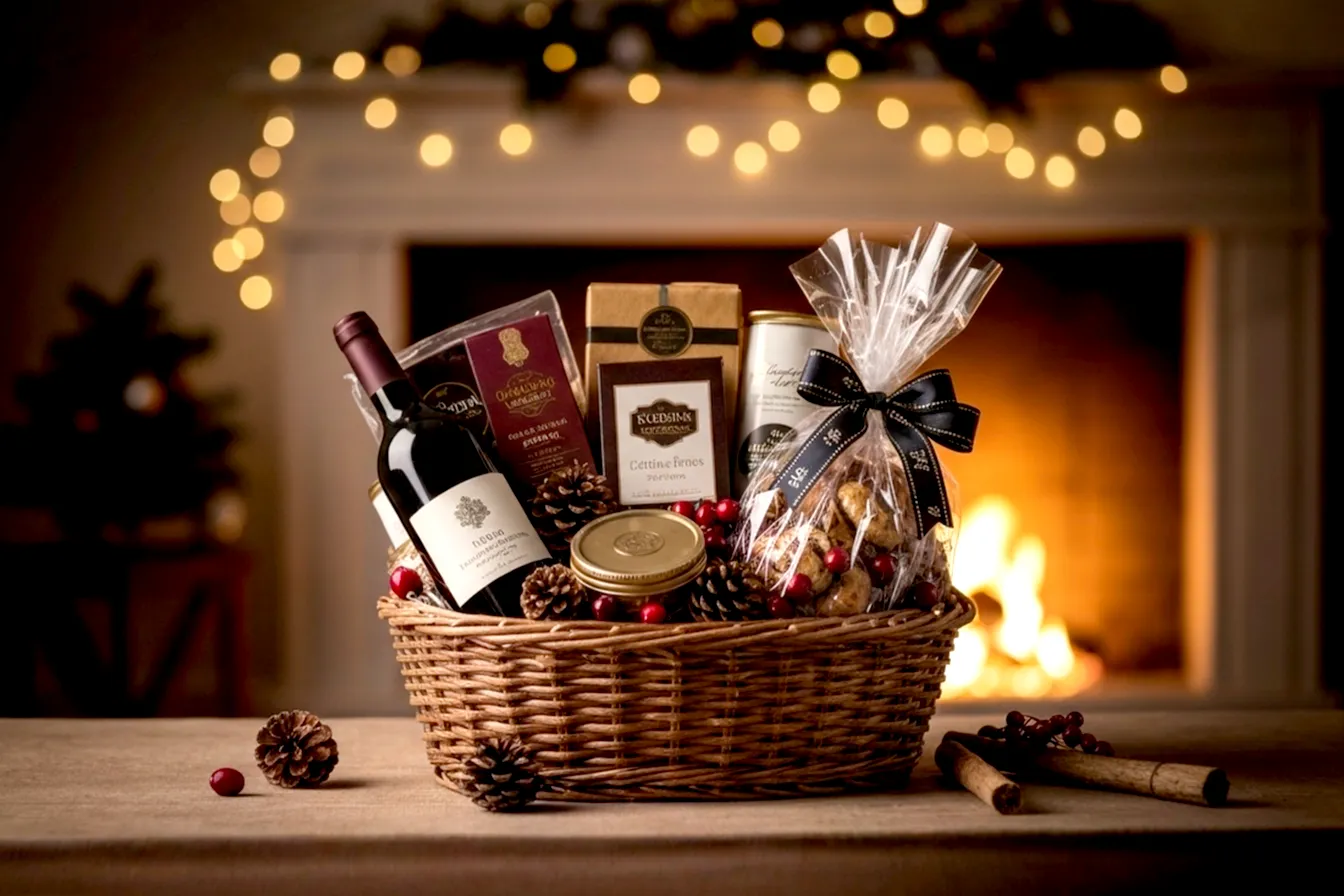This post may contain affiliate links. If you make a purchase through these links, we may earn a commission at no additional cost to you.
The holiday season is a magical time of year, filled with joy, warmth, and the wonderful opportunity to gather with loved ones. Hosting a Christmas party or holiday gathering is a fantastic way to spread cheer and create lasting memories. But before the carols start playing and the eggnog flows, there’s a crucial first step: sending out your invitations. Crafting the perfect Christmas card invitation isn’t just about pretty designs; it’s about clear communication and thoughtful etiquette.
A well-crafted invitation sets the tone for your event, ensures your guests have all the necessary information, and ultimately helps guarantee a successful and stress-free celebration. When you provide clear, concise, and complete details, you make it easy for your guests to RSVP and prepare, which in turn helps you plan effectively. This comprehensive guide will walk you through every aspect of Christmas card invitation etiquette, from the essential details to include, to choosing the right wording, and even navigating the modern world of digital invites. We’ll help you create invitations that are not only beautiful but also perfectly informative, ensuring your holiday gathering is a resounding success.
The Foundation: Essential Elements of Every Christmas Invitation
Every successful holiday gathering starts with an invitation that provides all the fundamental information. Think of these as the “who, what, when, and where” of your party. Missing even one of these crucial details can lead to confusion and a lower attendance rate. Getting these basics right is the cornerstone of good invitation etiquette.
Who’s Hosting? Clearly Stating the Host(s)
One of the first pieces of information your guests will look for is who is hosting the event. This might seem obvious, especially if you’re inviting close friends and family, but it’s still an essential detail to include. It clarifies who is extending the invitation and who guests should contact with questions or RSVPs.
For a formal gathering, you’ll typically use full names and titles, such as “Mr. and Mrs. John and Jane Doe request the pleasure of your company.” If it’s a more casual affair, simply “Join John and Jane Doe” or “The Doe Family invites you” works perfectly. If multiple people or families are co-hosting, list all their names clearly. This small detail ensures there’s no ambiguity about who is welcoming guests into their home or chosen venue.
What’s the Occasion? Defining Your Holiday Gathering
Beyond simply stating “Christmas Party,” it’s incredibly helpful to specify the type of holiday gathering you’re hosting. This immediately sets expectations for your guests regarding the formality, activities, and overall atmosphere of the event. Is it a sit-down dinner, a casual open house, a festive cocktail party, or a lively brunch?
For example, instead of just “Holiday Party,” consider “Christmas Dinner,” “Annual Holiday Open House,” “Festive Cocktail Soirée,” or “Gingerbread Decorating Party.” This clarity helps guests understand what to expect, from whether they should arrive hungry for a full meal to if they’ll be mingling or participating in a specific activity. It allows them to plan their evening and arrive prepared for the fun you have in store.
When and Where: Date, Time, and Location Details
These are arguably the most critical pieces of information on any invitation. Guests need to know when and where to show up. Be precise and leave no room for guesswork.
Start with the date and day of the week. For instance, “Saturday, December 14th.” Including the day of the week helps guests quickly cross-reference with their calendars. Next, provide the start time and, if applicable, an end time. For a dinner party, a specific start time is crucial, like “7:00 PM.” For an open house, you might indicate a window, such as “Drop in anytime between 4:00 PM and 8:00 PM.” Specifying an end time can be helpful for guests and also for you as the host, especially for more casual gatherings or those with a specific schedule.
Finally, the full address of the venue is non-negotiable. Even if guests have been to your home before, including the address prevents them from having to look it up. If the venue is tricky to find or requires special parking instructions, consider adding a small note or a link to a map. For virtual gatherings, clearly state the platform (e.g., Zoom, Google Meet) and provide the meeting link and any necessary access codes. Make sure the link is easily clickable if sending digital invitations.
RSVP Essentials: Ensuring a Smooth Headcount
The RSVP (from the French Répondez s’il vous plaît, meaning “Please reply”) is vital for hosts to get an accurate headcount. This information directly impacts your planning for food, drinks, seating, and activities. Clear RSVP instructions are a hallmark of thoughtful invitation etiquette.
Always include a clear RSVP deadline. This gives guests a specific timeframe to respond and allows you ample time to finalize your arrangements. A common timeframe is one to two weeks before the event date, but for larger or more formal events, you might need a longer lead time.
Specify how guests should RSVP. This could be a phone number, an email address, or a link to an online RSVP system. Make it as easy as possible for your guests to respond. For example: “Kindly RSVP by December 1st to Jane Doe at janedoe@email.com or (555) 123-4567.”
Sometimes, hosts use “Regrets Only.” This means guests only need to contact you if they cannot attend. If you don’t hear from them by the deadline, you assume they will be there. While this can reduce the number of responses you need to track, it can also lead to less accurate headcounts, as some guests might forget to decline. For most holiday parties, a direct RSVP request is preferable for better planning.
Emphasize the importance of their response. You don’t need to be overly dramatic, but a simple phrase like “Your timely response is greatly appreciated as we finalize our preparations” can encourage guests to reply promptly. An accurate guest count is crucial for everything from catering to ensuring you have enough party favors.
Beyond the Basics: Enhancing Your Invitation with Key Information
Once you’ve covered the essential “who, what, when, and where,” you can elevate your invitation by including additional details that enhance the guest experience and help them prepare. These elements address common guest questions and prevent last-minute confusion.
Setting the Scene: Dress Code Guidance
Guests often wonder what to wear to a holiday party. Including a dress code on your invitation is a thoughtful gesture that eliminates guesswork and ensures everyone feels comfortable and appropriately dressed. It also helps reinforce the tone and formality you’re aiming for.
Here are some common holiday dress codes and how to phrase them:
- Casual: “Casual attire,” “Come as you are,” or “Comfortable festive attire.” This suggests jeans, sweaters, and relaxed holiday-themed clothing.
- Festive: “Festive attire,” “Holiday casual,” or “Dress in your holiday best.” This encourages guests to wear holiday colors, subtle sparkle, or fun accessories without requiring formal wear. Think nice slacks or skirts, festive tops, or a tasteful holiday sweater.
- Cocktail Attire: “Cocktail attire” or “Semi-formal.” This implies dresses for women (knee-length or midi) and suits or sport coats with dress pants for men. It’s a step up from casual but not full formal.
- Formal/Black Tie Optional: “Formal attire,” “Black tie optional,” or “Holiday formal.” This means elegant dresses or gowns for women and suits or tuxedos for men. If “black tie optional,” guests have the choice, but it signals a very upscale event.
- Themed: For themed parties, be specific. “Ugly Sweater Contest: Don your ugliest holiday sweater!” or “Winter Wonderland: Dress in white, silver, or icy blue.”
Providing clear examples or a brief description can be very helpful. For instance, for “Festive Attire,” you might add “(think holiday colors, subtle sparkle, or a fun accessory).” This guidance ensures your guests arrive feeling confident and ready to celebrate.
Gift-Giving Guidance: Navigating Holiday Exchanges
The holiday season often involves gift-giving, and it’s essential to address expectations regarding gifts directly on your invitation, especially if you’re planning a gift exchange. This prevents awkward situations and ensures everyone is on the same page.
- For a Secret Santa or White Elephant Exchange: Clearly state the type of exchange and any parameters. For example: “Join our Secret Santa! Please bring a wrapped gift valued at approximately $25.” or “Participate in our White Elephant gift exchange! Bring a wrapped, quirky gift (new or gently used) under $20.” Specify if there’s a theme for the gifts.
- For a Cookie Exchange: Explain the quantity and presentation. “Our Annual Cookie Swap! Please bring two dozen of your favorite homemade cookies, with copies of the recipe to share.”
- When No Gifts Are Expected: If you prefer guests not to bring gifts, it’s perfectly polite to state this. Phrases like “Your presence is our present!” or “No gifts, please” are clear and gracious. You might also suggest a donation to a favorite charity in lieu of gifts if you wish.
It’s generally best to avoid mentioning host gifts on the invitation itself. Guests will typically know if a host gift is customary for the type of event you’re throwing.
Theme Time: Making Your Party Unique
A party theme can add an extra layer of fun and excitement to your holiday gathering. If you have a specific theme, it’s crucial to integrate it clearly into your invitation wording and design. This immediately gets guests into the festive spirit and helps them prepare.
Popular Christmas party themes include:
- Ugly Sweater Party: Guests compete for the most outlandish holiday sweater.
- Winter Wonderland: Decor and attire lean towards icy blues, whites, and silvers, evoking a snowy landscape.
- Christmas Caroling Party: Guests gather to sing classic carols, perhaps going door-to-door.
- Holiday Movie Marathon: A cozy gathering focused on watching festive films.
- Gingerbread House Decorating Contest: A creative and family-friendly activity.
When incorporating a theme, make it obvious in the invitation’s title or a prominent line. For an Ugly Sweater party, you might say, “Don your ugliest holiday sweater and join us for a festive evening!” For a Winter Wonderland, “Step into a Winter Wonderland with us!” The invitation’s design can also reflect the theme, using appropriate colors, fonts, and graphics. This helps build anticipation and ensures guests understand how to participate in the theme.
Guest List Clarity: Plus-Ones and Children
One of the most common sources of confusion for guests is whether they can bring additional people. Be explicit about your guest list intentions to avoid awkward situations upon arrival.
- Plus-Ones: If guests are welcome to bring a date or friend, state it clearly. You can address the invitation to “Mr. John Smith and Guest” or include a line like “You are welcome to bring a plus-one.” If you need their guest’s name for planning, ask for it in the RSVP: “Please include your guest’s name when you RSVP.” If plus-ones are not invited, you typically don’t need to state it, as the invitation is addressed only to the intended individual(s).
- Children’s Attendance: For family-friendly gatherings, you might address the invitation to “The Smith Family” or include a note like “Children are welcome!” If the party is intended for adults only, it’s polite and clear to state “Adults Only, Please” or “This is an adults-only celebration.” This helps parents arrange childcare in advance and avoids misunderstandings. While it might feel a bit direct, it’s far better than having guests arrive with children when the event isn’t set up for them.
Clarity on these points ensures that all invited guests understand the scope of the invitation and can plan accordingly, leading to a more comfortable and enjoyable experience for everyone.
Crafting Your Message: Wording and Tone
The words you choose for your Christmas invitation are just as important as the details you include. The wording sets the mood, conveys your personality, and gets guests excited about your holiday gathering. Tailoring your tone and message to the specific event is key to effective communication.
Choosing the Right Tone: Formal, Casual, or Playful
The tone of your invitation should match the formality and style of your party. This consistency helps manage guest expectations and ensures they arrive dressed and mentally prepared for the atmosphere you’ve created.
- Formal Tone: Use sophisticated language, often with traditional phrasing. This is suitable for elegant dinner parties, black-tie events, or very traditional gatherings.
- Example: “Mr. and Mrs. [Last Name] request the pleasure of your company at a festive holiday dinner.”
- Casual Tone: Opt for relaxed, friendly, and straightforward language. This works well for open houses, casual get-togethers, or family brunches.
- Example: “Join us for some holiday cheer at our annual Christmas open house!”
- Playful/Whimsical Tone: Incorporate fun, lighthearted, and creative phrasing. This is perfect for themed parties like ugly sweater contests, cookie swaps, or kids’ parties.
- Example: “Get ready to jingle and mingle! You’re invited to our most festive (and ugliest!) Christmas sweater party!”
Maintaining a consistent tone throughout the invitation, from the opening line to the RSVP instructions, helps create a cohesive and appealing message.
Wording Examples for Diverse Holiday Gatherings
Here are specific wording examples for various types of Christmas gatherings, demonstrating how to integrate all the essential and enhancing details:
Formal Dinner Party
“Mr. and Mrs. [Host Last Name] cordially invite you to a Festive Christmas Dinner on Saturday, December 14th at seven o’clock in the evening [Venue Name, if applicable] [Street Address, City, State, Zip Code]
Black Tie Optional. Kindly RSVP by December 1st to [Email Address] or [Phone Number]. Your presence is our cherished gift.”
Casual Open House
“You’re invited to our Annual Holiday Open House! Drop in anytime for festive treats, drinks, and good company.
Sunday, December 15th 2:00 PM – 6:00 PM The [Host Last Name] Residence [Street Address, City, State, Zip Code]
RSVP by December 8th to [Email Address] or [Phone Number] (Regrets Only, Please).”
Festive Cocktail Party
“Join us for a spirited evening of Holiday Cocktails and Hors d’oeuvres!
Friday, December 20th 7:30 PM until late [Host Last Name] Home [Street Address, City, State, Zip Code]
Festive Attire Encouraged! Kindly RSVP by December 10th to [Email Address] or [Phone Number].”
Family Christmas Brunch
“The [Host Last Name] Family invites you to a Very Merry Christmas Brunch! Let’s celebrate the season with delicious food and family fun.
Sunday, December 22nd 11:00 AM – 1:00 PM Our Home [Street Address, City, State, Zip Code]
Children Welcome! Please RSVP by December 16th to [Email Address] or [Phone Number].”
Ugly Sweater Contest
“Get ready to jingle and mingle! You’re invited to our Annual Ugly Christmas Sweater Party! Prizes for the ugliest, most festive, and most creative sweaters!
Saturday, December 7th 8:00 PM [Host Last Name] Pad [Street Address, City, State, Zip Code]
Don your ugliest holiday sweater! Kindly RSVP by November 30th to [Email Address] or [Phone Number].”
Holiday Cookie Swap
“Sweet treats and holiday cheer! Join us for a Christmas Cookie Exchange! Bring two dozen of your favorite homemade cookies to swap, and copies of your recipe to share.
Saturday, December 14th 3:00 PM – 5:00 PM [Host Last Name] Kitchen [Street Address, City, State, Zip Code]
RSVP by December 7th to [Email Address] or [Phone Number].”
White Elephant Gift Exchange
“Deck the halls and get ready for laughs! You’re invited to our White Elephant Gift Exchange Party!
Friday, December 13th 7:00 PM [Host Last Name] Place [Street Address, City, State, Zip Code]
Please bring one wrapped, quirky gift (new or gently used) valued at $20 or less for the exchange. Kindly RSVP by December 6th to [Email Address] or [Phone Number].”
Kids’ Christmas Playdate
“Ho Ho Ho! [Child’s Name] invites you to a Christmas Playdate! Crafts, cookies, and holiday fun!
Tuesday, December 17th 10:00 AM – 12:00 PM Our Home [Street Address, City, State, Zip Code]
Please RSVP by December 10th to [Email Address] or [Phone Number] so we know how many elves to expect!”
Personal Touches: Making Your Invitation Memorable
Beyond the standard information, adding a personal touch can make your invitation truly stand out and feel special. This could be a short, heartfelt message or a festive quote that resonates with you.
- Short Personal Notes: A brief line like “We can’t wait to celebrate the season with you!” or “Looking forward to making new holiday memories together” adds warmth.
- Festive Quote or Sentiment: Incorporating a classic holiday quote, a line from a favorite carol, or a general sentiment about peace and joy can elevate the invitation’s charm. For example: “May your days be merry and bright!” or “The best way to spread Christmas cheer is singing loud for all to hear.”
These small additions show thought and care, making your guests feel even more welcomed and excited about your holiday gathering.
The Logistics: When and How to Send Invitations
Once your invitation content is perfected, the next crucial step is determining the optimal timing and method for sending them. The holiday season is notoriously busy, so strategic planning here can significantly impact your attendance rates.
Timing is Everything: When to Send Christmas Invitations
Sending your invitations at the right time is paramount. Too early, and guests might forget; too late, and their calendars might already be full. For holiday gatherings, it’s generally advisable to send invitations earlier than you might for other events due to the high volume of social engagements during this season.
- Formal or Large Gatherings: For a formal dinner party, a significant annual event, or a gathering that requires guests to make travel arrangements, aim to send invitations 6 to 8 weeks in advance. This gives guests ample time to clear their schedules, arrange childcare, and plan their attire. For very high-profile events, you might even send “Save the Date” cards 3-4 months in advance, followed by the formal invitation closer to the date.
- Casual Gatherings: For more casual parties like open houses, cocktail parties, or family brunches, 3 to 4 weeks in advance is typically sufficient. This still provides a good window for guests to plan without being so far out that the event slips their mind.
- Last-Minute Invites: While generally not ideal, if you’re planning a very spontaneous, casual get-together, sending invitations 1-2 weeks in advance might be necessary. However, be prepared for a lower RSVP rate as many people’s holiday schedules fill up quickly.
Always consider your guest list. If many guests live out of town or have particularly demanding schedules, lean towards sending invitations earlier. The goal is to give everyone enough time to respond and make arrangements without feeling rushed.
Paper vs. Digital: Choosing Your Invitation Method
In today’s world, you have two primary options for sending invitations: traditional paper or modern digital. Each has its own set of advantages and disadvantages.
Traditional Paper Invitations: The Classic Appeal
Paper invitations offer a timeless elegance and a tactile experience that many people appreciate.
- Pros:
- Formality and Tradition: They convey a sense of importance and tradition, making them ideal for formal events.
- Keepsake: Many guests enjoy keeping physical invitations as mementos.
- Tactile Experience: The feel of quality paper and the visual appeal of printed designs can create a luxurious impression.
- Less Likely to Be Missed: A physical card in the mail is less likely to be overlooked than an email caught in a spam filter.
- Cons:
- Cost: Printing, envelopes, and postage can add up, especially for large guest lists.
- Time-Consuming: Designing, printing, addressing, and mailing takes a significant amount of time and effort.
- Mailing Issues: Invitations can get lost in the mail or delayed, particularly during the busy holiday season.
- RSVP Tracking: Requires manual tracking of responses, which can be cumbersome.
Digital Invitations: Modern Convenience
Digital invitations, often called e-vites, have become increasingly popular due to their convenience and efficiency.
- Pros:
- Cost-Effective: Many platforms offer free or low-cost options, eliminating printing and postage expenses.
- Instant Delivery: Invitations arrive in guests’ inboxes almost immediately, regardless of distance.
- Easy RSVP Tracking: Most digital platforms include built-in RSVP tracking, making it simple to manage your guest list and send reminders.
- Eco-Friendly: Reduces paper waste, appealing to environmentally conscious hosts.
- Rich Media: Can include interactive elements, maps, links, and even short videos.
- Easy Updates: Simple to send out updates or additional information if plans change.
- Cons:
- Less Traditional/Formal: Some guests may perceive them as less formal or personal than paper invitations.
- Spam Filters: Emails can sometimes end up in spam or junk folders, causing guests to miss the invitation.
- Accessibility for Older Guests: Some older guests may be less tech-savvy or prefer physical mail.
- Less of a Keepsake: Digital invitations aren’t physical items that can be displayed or kept as easily.
- Impersonal Feel: Can sometimes feel less personal if not customized thoughtfully.
Hybrid Approach: For a balance, consider sending paper invitations to older relatives or very formal guests, and digital invitations to everyone else. Or, send a “Save the Date” digitally and follow up with a formal paper invitation. The best method depends on your budget, time constraints, guest list demographics, and the desired formality of your event.
Addressing Your Invitations: A Guide to Proper Salutations
How you address your invitations, particularly paper ones, reflects your attention to detail and respect for your guests. Proper addressing etiquette varies based on the recipient’s relationship to you and their marital status.
- Formal Addressing (for paper invitations):
- Single Person: Use their full title and name. “Mr. John Smith” or “Ms. Jane Doe.”
- Married Couple (Same Last Name): Traditionally, “Mr. and Mrs. John Smith.” For a more modern approach, “Mr. John and Mrs. Jane Smith” or “Mr. and Mrs. Smith.”
- Married Couple (Different Last Names): List both names in alphabetical order or based on preference. “Ms. Jane Doe and Mr. John Smith.”
- Unmarried Couple Living Together: List both names, typically in alphabetical order or by preference. “Ms. Jane Doe and Mr. John Smith.”
- Family with Children: “The Smith Family” is common and inclusive. For a more formal touch, “Mr. and Mrs. John Smith and Family.”
- Professional Titles: Always use professional titles for doctors, military personnel, clergy, or elected officials: “Dr. Jane Doe,” “The Honorable John Smith.”
- Informal Addressing (for paper or digital invitations):
- For close friends and family, first names are perfectly acceptable: “John and Jane,” “The Smiths.”
- Avoiding Abbreviations: On formal paper invitations, it’s best to spell out street names (e.g., “Street” instead of “St.,” “Avenue” instead of “Ave.”). This adds to the formal aesthetic.
- Return Address: Always include a return address on the outer envelope of paper invitations. This ensures the invitation is returned to you if undeliverable and informs the recipient who the card is from.
Paying attention to these details demonstrates thoughtfulness and respect, enhancing the overall impression of your invitation.
Common Pitfalls and Pro Tips
Even with the best intentions, it’s easy to overlook small details when planning a holiday party. Being aware of common invitation mistakes and employing some pro tips can ensure your invitation process is as smooth as possible.
Avoiding Common Invitation Mistakes
- Forgetting Key Details: The most frequent error is omitting essential information like the date, time, or full address. Always double-check that all the “who, what, when, and where” details are present and correct.
- Unclear RSVP Instructions: If guests don’t know how or when to respond, they often won’t. Make the RSVP method and deadline crystal clear.
- Last-Minute Sending: Sending invitations too close to the event date, especially during the busy holiday season, significantly reduces your chances of a good turnout. Give guests ample time to plan.
- Assuming Guest Knowledge: Don’t assume guests know your address, your preferred dress code, or whether children are invited. Spell out all relevant details.
- Inconsistent Tone: Mixing very formal language with very casual elements can be confusing. Decide on your party’s tone and stick with it throughout the invitation.
- Overcrowding the Invitation: While it’s important to be thorough, avoid cramming too much text onto a small card. Use clear formatting, white space, and perhaps a separate enclosure card for very detailed information if using paper invitations.
Pro Tips for a Seamless Invitation Process
- Proofread Meticulously: Read your invitation aloud, and have at least one other person proofread it for typos, grammatical errors, and missing information. A fresh pair of eyes can catch mistakes you’ve overlooked.
- Set Up an RSVP Tracking System: Whether it’s a simple spreadsheet, a dedicated notebook, or an online RSVP platform, have a system in place to track responses as they come in. This makes managing your guest list and follow-ups much easier.
- Follow Up Politely with Non-Responders: A few days after your RSVP deadline, gently follow up with guests who haven’t responded. A quick text or email like, “Just checking in about the Christmas party on [Date] – hope you can make it! Please let me know if you’ll be able to join us by [New Date/ASAP] so we can finalize plans,” is perfectly acceptable.
- Consider Accessibility for All Guests: When choosing your invitation method, think about all your guests. If you have older relatives who aren’t online, a paper invitation might be best for them. If your venue has accessibility challenges, consider mentioning it or providing alternative arrangements.
- Send a “Save the Date” for Big Events: For very large or formal holiday parties, sending a “Save the Date” card (paper or digital) a few months in advance is an excellent way to get your event on people’s calendars early, especially if it’s a popular date or requires travel.
By anticipating potential issues and implementing these proactive strategies, you can ensure your invitation process is efficient and stress-free, setting the stage for a truly enjoyable holiday gathering.
RSVP Etiquette for Guests: A Quick Guide
While this article focuses on hosts, it’s worth a brief mention of proper RSVP etiquette for guests. Understanding your role as a guest in the invitation process is crucial for being a considerate attendee and helping your host plan effectively.
Responding Promptly: Why It Matters
When you receive an invitation with an RSVP request, the most important rule is to respond promptly. Ideally, reply within a day or two of receiving the invitation, and certainly no later than the specified RSVP deadline. Your host is relying on your response to finalize numbers for catering, seating, and activities. A delayed response or no response at all can cause significant stress and logistical challenges for the host.
Always respond in the manner requested (e.g., email, phone call, online form). If you’re unsure if your response was received, a polite follow-up is better than assuming.
Changing Your RSVP: When and How
Once you’ve RSVP’d “yes,” changing to a “no” should only happen in unavoidable circumstances, such as a sudden illness, a family emergency, or an unexpected professional conflict. Canceling because a “better offer” came along is considered very poor etiquette and can damage your relationship with the host. If you must cancel, notify your host immediately with a sincere apology and a brief, honest explanation.
Changing a “no” to a “yes” is generally more acceptable, but only if it won’t disrupt the host’s plans. If it’s a seated dinner with a fixed guest count, it might not be possible. For a casual open house, it’s more likely to be fine. Always check with the host first before assuming you can attend after declining.
Bringing Uninvited Guests: A Firm No
An invitation is extended to the specific person or people named on it. Never bring uninvited guests, including a date, friend, or children, unless the invitation explicitly states “and Guest” or “Children Welcome.” If you wish to bring someone not named, contact the host beforehand to ask if it’s permissible. Be prepared for them to say no, as they may have space or budget limitations. Showing up with an uninvited person puts the host in an awkward position.
Host Gifts: A Thoughtful Gesture
While not always mandatory, it’s a thoughtful gesture to bring a small host gift when you’re invited to someone’s home for a holiday party. This isn’t expected for every casual drop-in, but for dinner parties or more significant gatherings, it’s a nice way to show appreciation for their hospitality.
Good host gift ideas include a bottle of wine, a gourmet food item, a festive candle, a small plant, or a box of chocolates. If you bring flowers, it’s polite to bring them in a vase so the host doesn’t have to search for one. Present the gift upon arrival so the host can set it aside.
By adhering to these guest etiquette guidelines, you contribute to a smoother, more enjoyable experience for both yourself and your gracious host.
Conclusion
Crafting the perfect Christmas card invitation is an art that blends tradition with clear, modern communication. By meticulously including all the essential details—who, what, when, and where—and thoughtfully adding enhancing information like dress codes, gift guidance, and party themes, you set your holiday gathering up for success. Choosing the right tone, whether formal, casual, or playfully festive, ensures your message resonates with your guests and accurately reflects the spirit of your event.
Remember, timing is crucial during the bustling holiday season, so send your invitations with ample lead time. Whether you opt for the classic charm of paper invitations or the convenience of digital ones, focus on clarity and completeness. And don’t forget the small but significant touches, like careful proofreading and a personal note, that make your invitation truly memorable.
Ultimately, the goal of a well-executed Christmas invitation is to eliminate confusion and build excitement, allowing your guests to anticipate a joyful celebration. By following these etiquette guidelines, you’re not just sending out cards; you’re extending a warm welcome, fostering connection, and laying the groundwork for a holiday gathering filled with laughter, cheer, and cherished memories. May your holiday season be merry and bright, starting with the perfect invitation!






